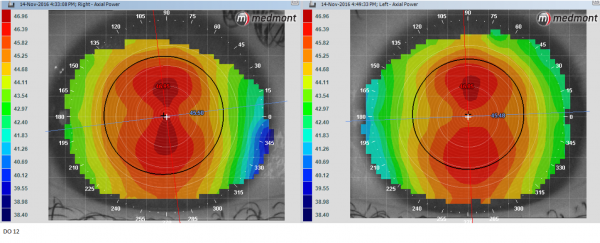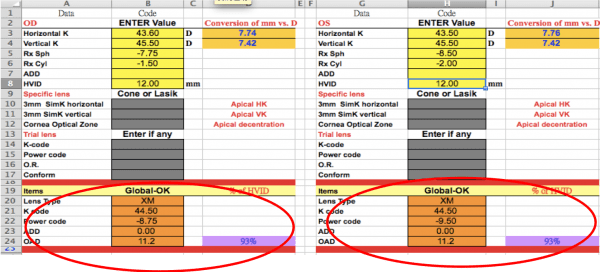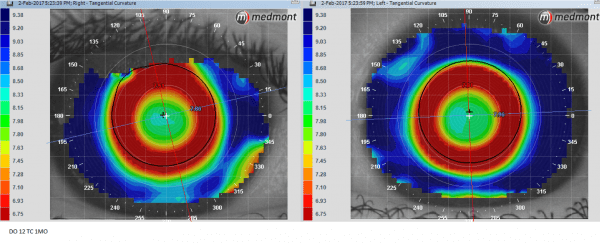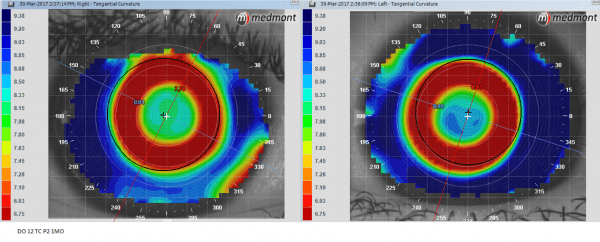Fitting Ortho-K for a Patient with High Myopia
Patient D.O.
Aet. 12 years
Spectacle Rx
R -7.25/-0.25 x 170 = 20/20
L -7.75 DS = 20/20
Sim Ks R 45.50/46.75 L 45.25/46.50 HVID by Medmont 11.0 mm ou. Normal e values, small central toricity.
Lens Design: GOV® orthokeratology lens
Calculating the result
Ortho K lens calculation software suggested an initial lens design, however it was decided to flatten the suggested peripheral curves by 0.25D to assist more rapid flattening for this high Rx.
Tangential Maps for first pair at 1 month follow up
At 1 month follow up, treatment zones well centred.
Visual Acuities R 20/60 L20/20
Over Refractions R -0.75/-1.00×164 =20/20-2 L plano/-0.50×166 = 20/20-1
At 6 week follow up:
va’s R 20/25-2 L 20/20-1
Over refraction R pl/-0.75×171=20/20 L -0.75/-0.50×164 =20/20-2
At this point, it was decided to increase target correction by -0.75 D ou.
Tangential Maps for second pair at 1 month follow up
Visual Acuities R20/25 -1 L20/25+1
Over Refractions Plano = 20/25-1 L +0.75 = 20/25+2
With the prevalence of high myopia increasing, practitioners need not be deterred from offering these patients the benefits of ortho-k, provided the optimum design of corrective lens is used.
Thank you to Dr. Arthur Tung, M.D. for contributing to Global Insight.
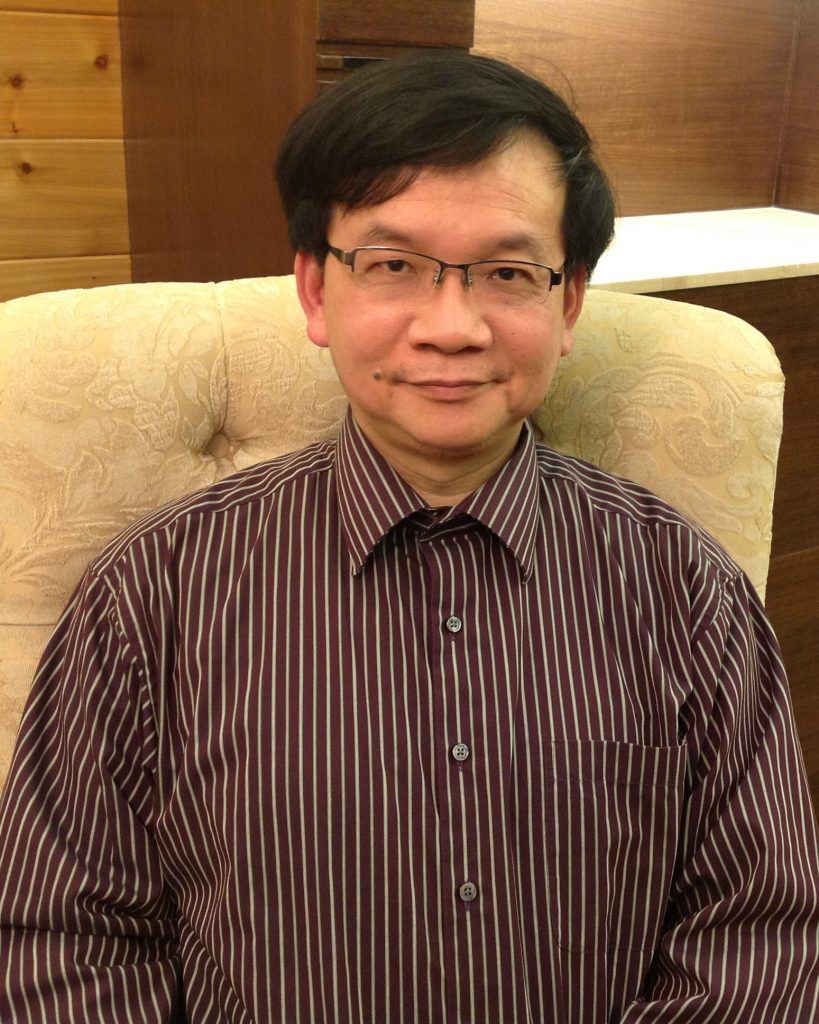
Dr. Arthur Tung, MD, FIAO is the designer and patent holder of GOV® orthokeratology lens, ArtMost® and SoftOK® soft contact lens licensed to practice in Taiwan, China and the state of California, 3-time board member of The Ophthalmological Society of Taiwan, former attending physician at Taiwan Chang Gung Hospital, and Kaohsiung Medical College Graduate.

